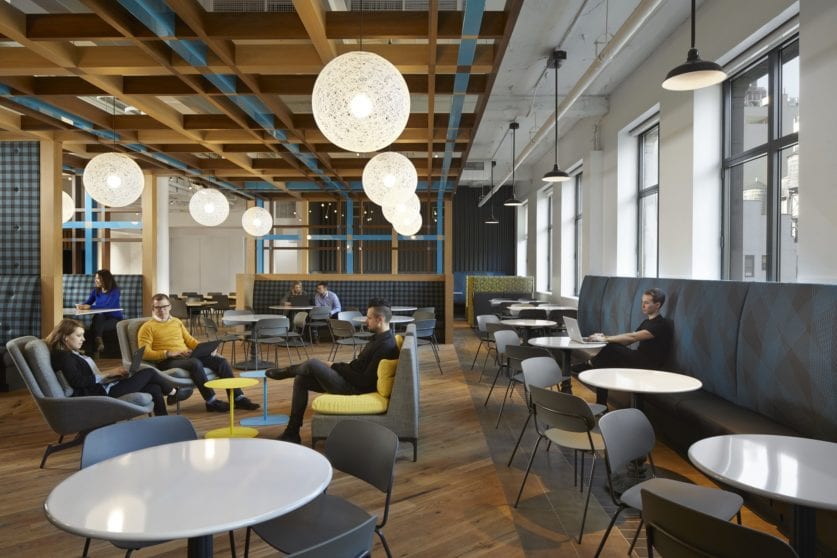More...
By David Kutsunai, IIDA | Principal | January 3, 2017
Providing the right choices in the built environment empowers a more autonomous and resilient workforce.
As organizations grow ever more savvy in their quest for business agility, designers of work environments are tasked to deliver flexible spaces that offer greater autonomy for individual workers and work groups. Environments that support multiple objectives and provide the best places for staff to be productive, social, and healthy nurture greater resilience, as workers select the appropriate setting for their personal work style and lifestyle. With today’s diverse workforce embracing multiple generations, shifting gender demographics, multi-cultural backgrounds, and varying technological preferences, greater demands are made on the performance of work environments to meet a plethora of expectations.
So that workers can self-determine how best to work alone or in groups, the autonomous workplace will morph to provide a variety environments. Tech companies have long dealt with the need for speed and agility to modify their work environments on demand, and at IA, we’ve evolved several approaches that align facilities with the flexibility required to support each client’s business goals. For example, with one client, we developed a kit of parts that can quickly, and cost effectively, provide a variety of private, semi-private, or open work settings specific to each team. The duration of these work settings are variable, and the space solutions are scalable to the requirements and size of the business units. This flexible and customizable approach allows teams and individuals to be truly independent and more efficient.
Over the past few years, quantitative design drivers, including cost per employee and cost per square foot, square-foot per person ratios, conference space ratios, and amenity allocations, have often ruled workplace design. But for organizations concerned with both space allocation metrics and facilities operations, today’s supple environments increase facility performance as well as the performance of the autonomous workers who use them.
Having work settings that can easily be transformed around you and your team for greater autonomy is a big plus, but organizations are finding even that is not enough. Providing choices for each employee on where to work, how to work, and even where not to work empowers a more resilient workforce.

Confidential client. Photo by Jeff Cate.
The health and wellbeing of each employee is a major consideration and, today, the design pendulum appears to have swung again as qualitative design drivers are more strategically weighted to provide for lifestyle experiences that employees want. To remain competitive for top talent, these lifestyle factors often include robust food services; access to retail and services; mothers’ rooms; prayer rooms; sleeping/relaxation spaces; bike storage with repair and maintenance equipment; showers and lockers; accommodation for pets; contemplation space; recreational space, outdoor decks and gardens; and public places that engage with the community. Technology allows work to occur in most of these spaces, giving workers the expectation that they are able to work anywhere, anytime.
With the on-going iterations of our clients’ needs, the pendulum will always swing between quantitative and qualitative design drivers, but even as these factors increasingly integrate, the relationship between autonomy and resilience will remain a critical factor when strategizing and designing the best work environments.
Like What You See?
If you enjoyed reading about deisgn in 2017, you'll probably enjoy learning about design in 2018! Click below to read "Design in 2018: Global Influencers of Today's Workplace".
Providing the right choices in the built environment empowers a more autonomous and resilient workforce.





